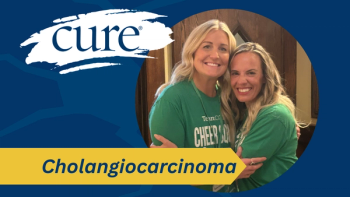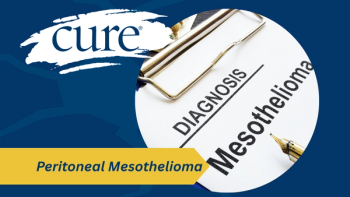
- Summer 2009
- Volume 8
- Issue 2
No I.D.
Key Takeaways
- Cancer of unknown primary (CUP) is a significant cause of cancer mortality, often presenting as advanced due to its metastatic nature.
- Advances in diagnostic methods, including genetic profiling, are improving the identification of primary cancer sites, aiding targeted treatment.
Treating cancer is a tricky matter when the type is unknown.
Cancer is frightening enough when it has a name: Colon. Ovarian. Bone. But sometimes, cancer appears without an identity, scattered around the body in small, faceless metastases, or as lesions on a single organ to which the cells clearly don’t belong.
Today, such “cancer of unknown primary,” or CUP, strikes 30,000 people a year in the United States and is the fourth leading cause of cancer death. CUP can appear as cells that vaguely resemble other types of cancer, or as completely undifferentiated cells, which elude identification with conventional pathology tools. And because CUP appears first as one or many metastases, it is nearly always considered advanced.
But researchers are beginning to make progress against the metastatic disease with better pathology, imaging, genetic profiling, and more targeted treatment. “For one thing, fewer patients will have the diagnosis of ‘cancer of unknown primary,’ because new diagnostic methods are improving our ability to identify the primary site,” says John Hainsworth, MD, an oncologist and chief scientific officer at the Sarah Cannon Research Institute in Nashville.
That’s critical, says Gauri Varadhachary, MD, an oncologist at M.D. Anderson Cancer Center in Houston who conducts research on CUP and treats it. Today’s treatments are increasingly targeted to the cancer type, she says, so if a CUP resembles, say, testicular cancer, or pancreatic, or breast, there are reasonable and sometimes very effective treatment paths to pursue. “And for those patients who don’t fit into a favorable subset, the empiric treatment is improving in parallel with the way that all advanced cancer treatments are improving,” Hainsworth says. “We will make progress.”
View Illustration : Following the Clues
For most newly diagnosed CUP patients, the first days or weeks following discovery of a lesion or lesions are marked by an intense search for the tissue in which the cancer likely originated. That may involve PET, MRI, and CT imaging, a detailed pathology evaluation of cancer tissue, and—occasionally—new molecular genetic profiling assays, which use patterns of gene activity to find similarities with known cancer types.
Sue Perla, 55, of New York City, had felt dragged down for weeks when she collapsed just half a block from her home in 2007. “I had been thinking I was just working too many hours,” Perla says, “but this was something more.”
Surrounded by the emergency room clatter in the nearest hospital, a doctor told Perla she had metastatic cancer and would likely die within months. Perla’s ribs, vertebrae, and pelvis were speckled with metastases. For six days, Perla and her sister, a nurse, fought to get detailed information on her diagnosis and a clear treatment plan. Finally, after transferring to New York University Cancer Center, and after a battery of tests, her cancer was identified as breast cancer.
“I had a mammogram less than a year ago, and it showed absolutely nothing,” Perla says. The initial pathology report triggered a PET scan, which revealed a tiny lump on Perla’s left side, “no bigger than a fingernail,” she says. New analysis of Perla’s tumor was quite clear: advanced estrogen receptor-positive breast cancer.
Her case is not unusual; sometimes, clues from pathology, clinical presentation, and now genetics lead oncologists to a cryptic tumor in a breast or elsewhere, which can be blamed for the metastases and may therefore guide specific treatment. In about a third of CUP patients—representing about 4 percent of all cancers—a primary site is never found.
For Perla, the clear diagnosis meant a clear treatment plan: the aromatase inhibitor Femara (letrozole) and radiation therapy focused on tumors on her spine.
Perla’s doctors also ordered Zometa (zoledronic acid), a bone-strengthening drug that treats complications of cancer that has spread to the bone. (Zometa has also shown direct anti-tumor activity in some breast cancer patients, according to recent research.) Nearly two years later, Perla still takes Femara and Zometa—and is in remission.
Even if Perla’s lump had never been found, her first pathology report would likely have placed her into one of a growing number of “favorable subsets,” which comprise about 20 percent of CUP patients. Hainsworth and his colleagues were among the first to begin finding those groups 30 years ago.
“During my oncology fellowship, we were able to identify a few patients with cancer of unknown primary and treat them, and they had extremely good results,” Hainsworth says. “Some of them are still alive today, and that is really at odds with what you read about CUP back then, which was that it was a death sentence.”
The first group of CUP patients that caught his attention, Hainsworth says, was comprised of young men with poorly differentiated carcinoma. Back then, testicular cancer and other germ cell tumors were being cured with then-new cisplatin-based chemotherapy regimens. “We used those regimens, and they had very good responses, responses like they had [testicular] germ cell cancers,” Hainsworth says.
Around the same time, women with unidentified cancers limited to the peritoneum were responding to chemotherapy as if they had ovarian cancer, Hainsworth says. Over the years, the group has become so well recognized as having the same cancer biology as ovarian cancer patients, they are now included in clinical trials for advanced ovarian cancer.
Other favorable CUP subsets include poorly differentiated carcinomas, neuroendocrine carcinomas, women with metastases in axillary lymph nodes, and squamous cell carcinoma involving inguinal lymph nodes (in the pelvic area).
Varadhachary cautions that CUP remains an extremely varied disease, so it can be dangerous to draw conclusions about the prognosis of CUP patients who fall into one subset or another, or none. “Some CUP cancers show response much better than you expected,” she says. “Others that were expected to be slow-growing may show a more aggressive biology. It’s a humbling experience, and we are quite cautious about what we say.”
Both Varadhachary and Hainsworth are optimistic that new tumor genetic tests will help not only to improve scientific understanding of the biology and origin of CUP, but also to target treatment.
New tests can identify a primary cancer type based on tissue sampled from metastases. The tests compare patterns of gene activity in metastatic cancer cells with those in known primary cancers. Last July, the Food and Drug Administration cleared the first such test for cancer of unknown primary. The Pathwork Tissue of Origin Test analyzes a tumor’s gene expression pattern using more than 1,500 genes, and then compares it with a database of 58 types of cancer.
“Molecular genetic profiling of tumors is the newest thing, and I think it’s a very encouraging technique,” says Hainsworth, who is leading a clinical trial on the effectiveness of another assay called Theros CancerTYPE ID developed by bioTheranostics to guide treatment.
Such research is tricky. Although Hainsworth and his colleagues have confirmed that molecular profiling can identify a tissue of origin in most patients, it is usually impossible to confirm the diagnosis clinically, he says. Moreover, even if a CUP patient’s tumor “looks” just like colon cancer, that person still is not a typical colon cancer patient. “Will they respond to treatment in the same way?” Hainsworth asks. “That’s not known yet, but it is the goal of our trial and a large trial … in France.”
Wells Messersmith, MD, of the University of Colorado Cancer Center, is interested to see those results. For now, though, he rarely orders a genetic assay on a cancer of unknown primary. “I wouldn’t know what to do with the results, frankly,” Messersmith says. “I’m not yet sure we have the confidence [in the tests] to change treatment strategy.”
“I’ve been reading about these new genetic tests,” says Lori Young, a 39-year-old CUP patient from New Market, Alabama. “At the time I was diagnosed, that really wasn’t common.”
Young was diagnosed with CUP in 2007, by accident. A kidney ultrasound to investigate a puzzling but temporary high blood pressure episode turned up several lesions on her liver. No one was particularly worried, Young says, but when, a month later, she developed gallstones and needed surgery, she mentioned the ultrasound results to her surgeon.
“I was kind of joking with him, and said, ‘While you’re in there, why don’t you look at my liver?’ ” On October 3, 2007, her daughter’s 11th birthday, the call came that Young had poorly differentiated adenocarcinoma, origin unknown.
“Then they started the process of trying to find out where it came from,” Young sighs. “I had a mammogram. I had a colon oscopy. I had an ultrasound of my uterus. I even swallowed a pill with a camera in it. I had MRIs, PET scans, blood work. Nothing. They had nothing that would give them a jump on my treatment protocol.”
Even with increasingly powerful tools, some metastases will likely continue to elude diagnosis, and in cases such as Young’s, oncologists and patients will continue to rely on “empiric” treatments. Today, that means powerful regimens that include cisplatin, carboplatin, and/or taxanes (Taxol [paclitaxel] and Taxotere [docetaxel])—sometimes with targeted drugs such as Avastin (bevacizumab) and Tarceva (erlotinib).
Young initially took a combination of Taxol, carboplatin, and Avastin every three weeks for 11 months—and Tarceva every day. “It’s kind of a shotgun effect … . This broad range can deal with a lot of different cancers it may have come from,” Young says.
Researchers are beginning to sort out why some people with CUP do well with that sort of combination, and others do not. Reports have found that some CUPs, for example, overexpress a gene called HER2, which is associated with an aggressive form of breast cancer that can be targeted with specific drugs.
Young said the powerful drug combination produced mind-numbing fatigue, so when her lesions showed activity again last winter, she and her oncologists decided to try a more “gentle” combination of Avastin and Alimta (pemetrexed).
“I allowed myself to fall apart once, right after the diagnosis,” she says. “Then I said, ‘OK, let’s start fighting.’ I know it’s not curable, but my goal is the best case: remission, no cancer activity.”
Articles in this issue
over 16 years ago
Web Exclusive: Find a Clinical Trial That's Right for Youover 16 years ago
Web Exclusive: Find a Clinical Trial That's Right for Youover 16 years ago
Web Exclusive: A Q&A with an Extraordinary Healerover 16 years ago
Web Exclusive: Types of Kidney Cancerover 16 years ago
Web Exclusive: Helpful Adviceover 16 years ago
Web Exclusive: Developing a Strategyover 16 years ago
Web Exclusive: Searching for New Targetsover 16 years ago
Web Exclusive: When Survivors Should Exercise Cautionover 16 years ago
Web Exclusive: Fertility Guidelines Not Meeting Needs of Patientsover 16 years ago
Web Exclusive: A Peaceful Spirit




